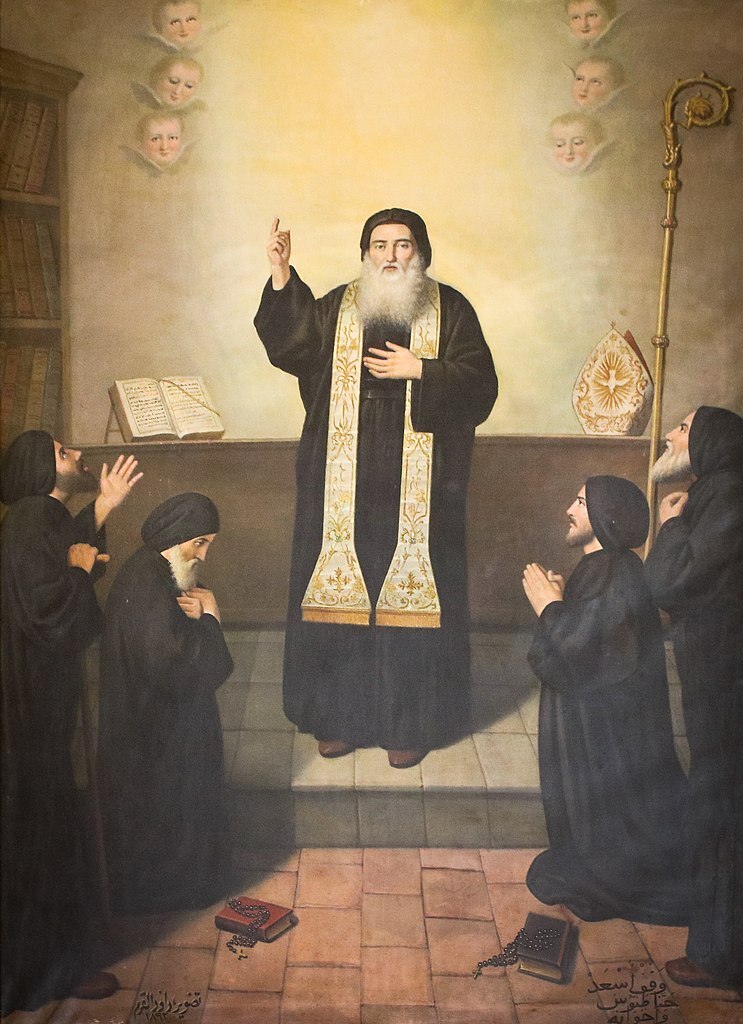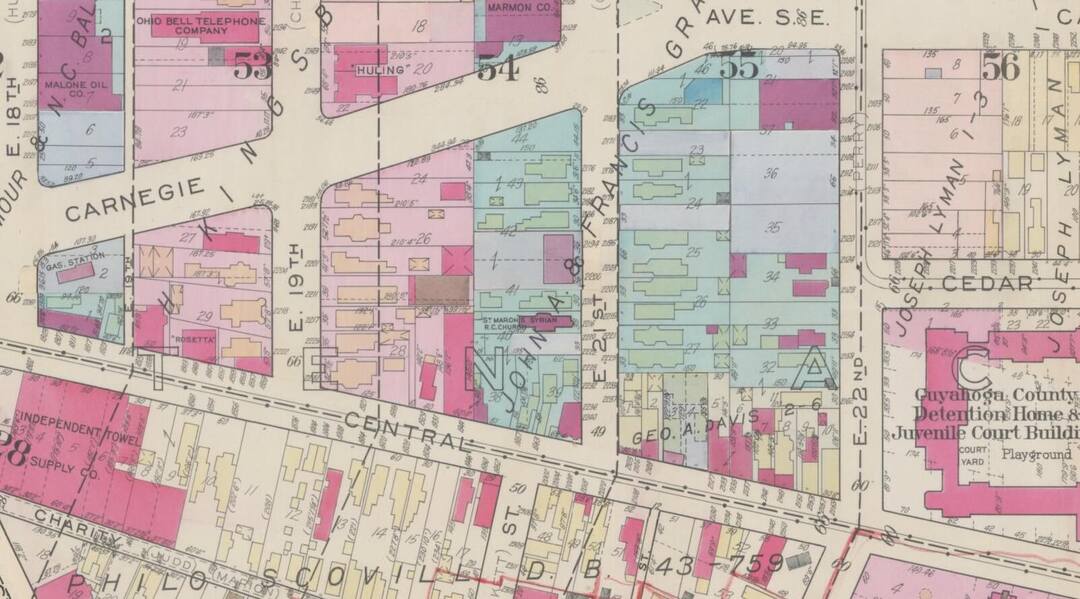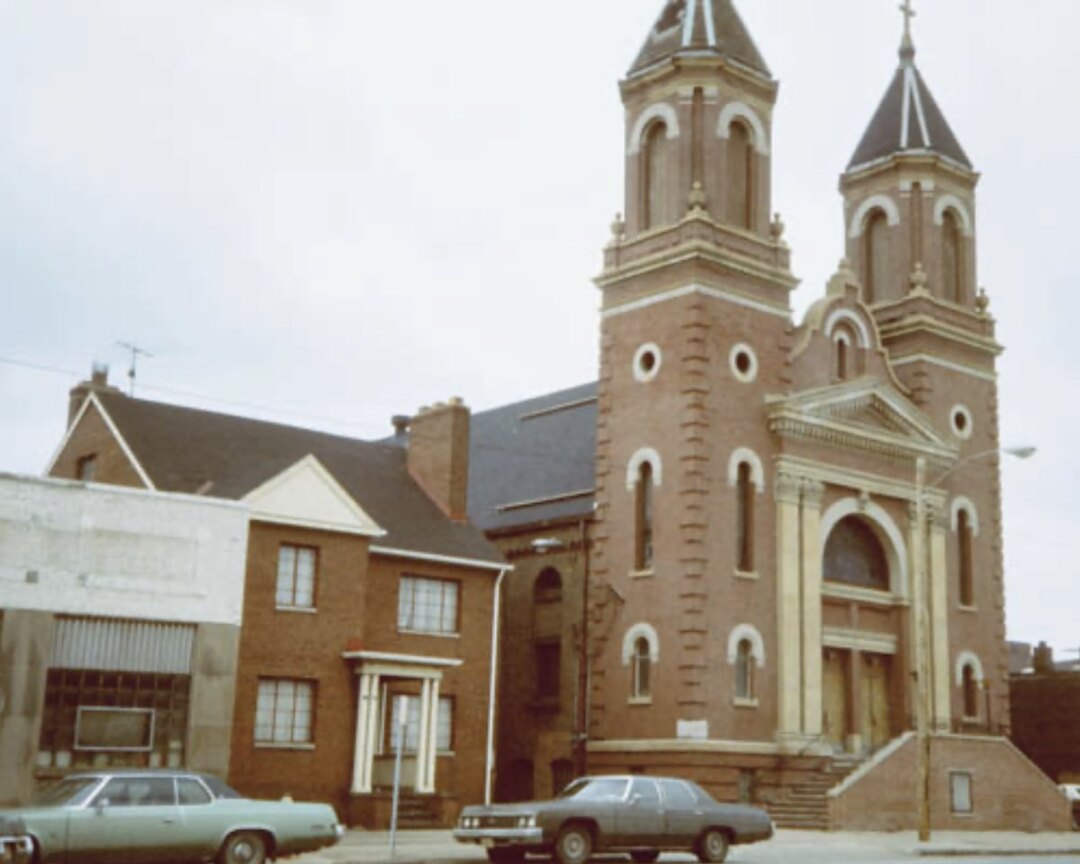
In view of Progressive Field stands a historic landmark of Cleveland’s Lebanese community. Wedged between Aladdin’s Bakery and Market on its east flank and a double-decker parking garage topped by the statues of eight saints to its west, the twin-spired red-brick edifice of St. Maron Church offers a hint of a long-lost neighborhood that was once home to thousands of immigrants from the eastern Mediterranean before central-city redevelopment and suburbanization simultaneously pushed and pulled them away.
St. Maron Church, with close to 1,000 parishioners, is a Lebanese parish that follows the Maronite Rite, a liturgy recited in Syriac, a dialect of the Aramaic language believed to have been spoken by Jesus Christ at the Last Supper. The Maronite Rite is one branch of the Antiochene or Antiochian Rite that arose from St. Peter’s establishment of the Church of Antioch. Cleveland’s St. Maron is part of the Maronite Christian denomination, named for St. Maron, a 4th-century Syrian Christian priest who later became a hermit monk. His disciples went on to settle in the cedar-forested highlands of Mount Lebanon. The Maronites have been in communion with Rome since the 12th century but retained autonomous governance under the Patriarch of Antioch in Lebanon.
Lebanese and Syrian immigration to Cleveland dates as far back as the 1870s but was more pronounced in the 1890s and 1900s. Although they settled in various parts of the central city, most concentrated in the Haymarket District around what is now Progressive Field. Among the immigrants were more than 100 Maronite families, who formed the St. John Maron Society in 1914 to raise money to establish their own parish. In 1915, they succeeded in forming St. Maron Church in an 1870 two-story brick apartment building they purchased at 2214 East 21st Street just north of Cedar Avenue. The parish converted the building into its church with an upstairs rectory. Fr. Peter Chalala of Baalbek, Lebanon, served as St. Maron’s first pastor for its first six years. The congregation had four subsequent pastors over the thirty-two years after 1921. The longest-serving pastor, Fr. Joseph Komaid, a missionary originally from Sahel Alma, Lebanon, served the church for twenty-five years (1927-1952).
Under Fr. Komaid’s leadership, St. Maron acquired the former St. Anthony Church at 1245 Carnegie Avenue in 1939. St. Anthony, an Italian parish, had formed in 1886 and met in a small wood-frame building on Ohio Street (Central Avenue) until it was able to build a large Romanesque-style church on Carnegie in 1904. As the Haymarket neighborhood it served experienced an outmigration of parishioners, St. Anthony merged with St. Bridget’s, an Irish parish on East 22nd Street off Scovill Avenue, in 1938. St. Anthony sold its Carnegie Avenue church property to St. Maron the following year. St. Maron held its dedicatory mass, followed by a banquet at Hotel Carter, on April 7, 1940.
Over the years, a flourishing St. Maron expanded even as it faced some challenges. The congregation built a rectory in 1951 and renovated the church four years later, adding new stained-glass windows. In 1971, it had to repair substantial damage inflicted by a bomb that detonated inside a car parked in the East 13th Street alley between the church and Middle East Bakery (later Aladdin’s), which had been the target of three bombing attempts since it opened the previous year. In the early 1980s the church undertook the second major renovation and built a new administration building along its rear on Bronson Court. In the 1990s, St. Maron continued to attract an increasing number of parishioners, which necessitated additions to the church in 1997 and again two years later. The opening of Jacobs Field (now Progressive Field) west of St. Maron made parking more difficult for parishioners, leading the church to demolish its social hall in 1998 for a two-story garage that could ease access for churchgoers while raising money through event parking.
Continued congregational growth led the “landlocked” church to pursue building a larger church in Independence on land once occupied by Marcus A. Hanna II’s Rhea-Mar country estate and, later, the Sisters of the Good Shepherd’s Marycrest convent. When the suburb’s government tried to block St. Maron’s plan in 2007, citing drainage concerns, the parish sued and won the right to build. Thereafter, the church initiated a long-term building fund and has since used the Independence property, christened Maronite Village, for its administrative office, chapel, and community events such as its annual Middle Eastern Food Festival even as it continues its tradition of Sunday mass along downtown’s southern edge.
Images




